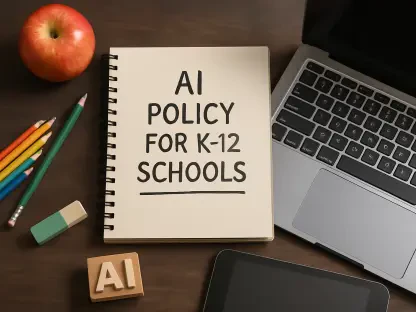As students across Lee County gear up for the new school year, a significant change awaits them in classrooms district-wide, particularly spotlighted at Gateway High School, where a stringent cellphone policy is now in full effect. This regulation, recently approved by the Lee County School Board, requires all K-12 students to power down their devices, stow them in backpacks, and place those bags at the front of the classroom during lessons. The core objective is to curb distractions and boost student engagement, addressing a pervasive challenge in modern education where digital devices often compete with learning for attention. This initiative reflects a growing concern about the impact of constant connectivity on academic focus, setting the stage for a deeper exploration of how such measures can reshape the educational landscape.
Addressing Digital Distractions in Education
Impact on Classroom Engagement
The implementation of this cellphone restriction in Lee County schools aims to create an environment where learning takes precedence over digital interruptions. At Gateway High School, which has upheld a no-cellphone rule for several years, the results have been notably positive. Assistant Principal April Thompson has observed that establishing clear expectations from the outset has streamlined enforcement across the campus, fostering a culture of attentiveness. Teachers have reported a marked improvement in student participation during class discussions and activities, as the absence of phones minimizes the temptation to check notifications or social media. This shift has allowed educators to delve deeper into complex topics without the constant pull of technology, creating a more immersive learning experience. Students, too, have adapted to this change, finding that their ability to concentrate on lessons has strengthened, which in turn supports better academic outcomes and a renewed appreciation for face-to-face interaction.
Student Perspectives and Academic Benefits
Beyond the administrative viewpoint, student feedback underscores the tangible benefits of the cellphone policy in enhancing their educational journey. For instance, eleventh grader Ja’zaria Towe from Gateway High School shared that keeping her phone out of reach during class has been instrumental in maintaining her focus, directly contributing to her strong GPA and aspirations for higher education. This sentiment echoes among many peers who find that without the lure of instant messaging or apps, they can engage more fully with coursework and classroom dialogue. The policy not only aids in immediate academic performance but also instills a sense of discipline that prepares students for future environments where self-regulation is key. By prioritizing presence over digital distraction, the rule encourages a mindset shift that values learning as a primary focus, potentially influencing long-term habits that extend well beyond the school walls into professional and personal spheres.
Broader Implications and Policy Enforcement
Safety Measures and Emergency Preparedness
While the cellphone ban in Lee County schools has garnered support for its focus on engagement, concerns about emergency communication have surfaced among some parents and stakeholders. Addressing these apprehensions, educators like teacher Mickie Shaw have emphasized that the district has established robust protocols to ensure students can reach their families during critical situations. Schools are equipped with systems that facilitate swift contact through office lines or designated staff, maintaining safety as a top priority even with devices out of immediate reach. This balance between restriction and accessibility demonstrates a thoughtful approach to policy design, acknowledging the importance of connectivity in times of need while still upholding the primary goal of minimizing classroom disruptions. Such measures reassure the community that student well-being remains paramount, even as the district pushes for a more focused academic atmosphere through technological limits.
Disciplinary Actions and Long-Term Development
Enforcement of the cellphone policy in Lee County schools comes with a structured disciplinary framework to ensure compliance and accountability. When a student is found using a device during instructional time, staff confiscate it, and repeated offenses—specifically by the third violation—require parents to retrieve the item, which could include accessories like earbuds. This progressive approach underscores the seriousness of the rule while aiming to deter habitual noncompliance through parental involvement. Beyond immediate consequences, the policy serves a larger purpose of preparing students for real-world challenges, as highlighted by educators who note that learning to manage distractions is a vital life skill. By fostering an environment where focus is non-negotiable, the initiative equips young individuals with the ability to prioritize tasks and be present, traits that are invaluable in higher education and professional settings where personal responsibility often dictates success.
Setting a Precedent for Educational Trends
The success of the cellphone restriction at Gateway High School and its district-wide adoption in Lee County point to a broader trend in education toward combating digital overload. This policy could serve as a model for other districts grappling with similar issues, as the reported increase in student engagement and focus offers compelling evidence of its efficacy. While no significant opposition has been voiced within the district, the proactive addressing of emergency concerns indicates a nuanced understanding of potential challenges, ensuring the policy’s sustainability. As schools nationwide observe the outcomes of such measures, there’s potential for a ripple effect, prompting more educational institutions to reevaluate their stance on technology in the classroom. This movement reflects a collective recognition that while digital tools are integral to modern life, their unchecked presence in learning spaces can hinder development, paving the way for policies that prioritize in-person interaction and academic growth over constant connectivity.









